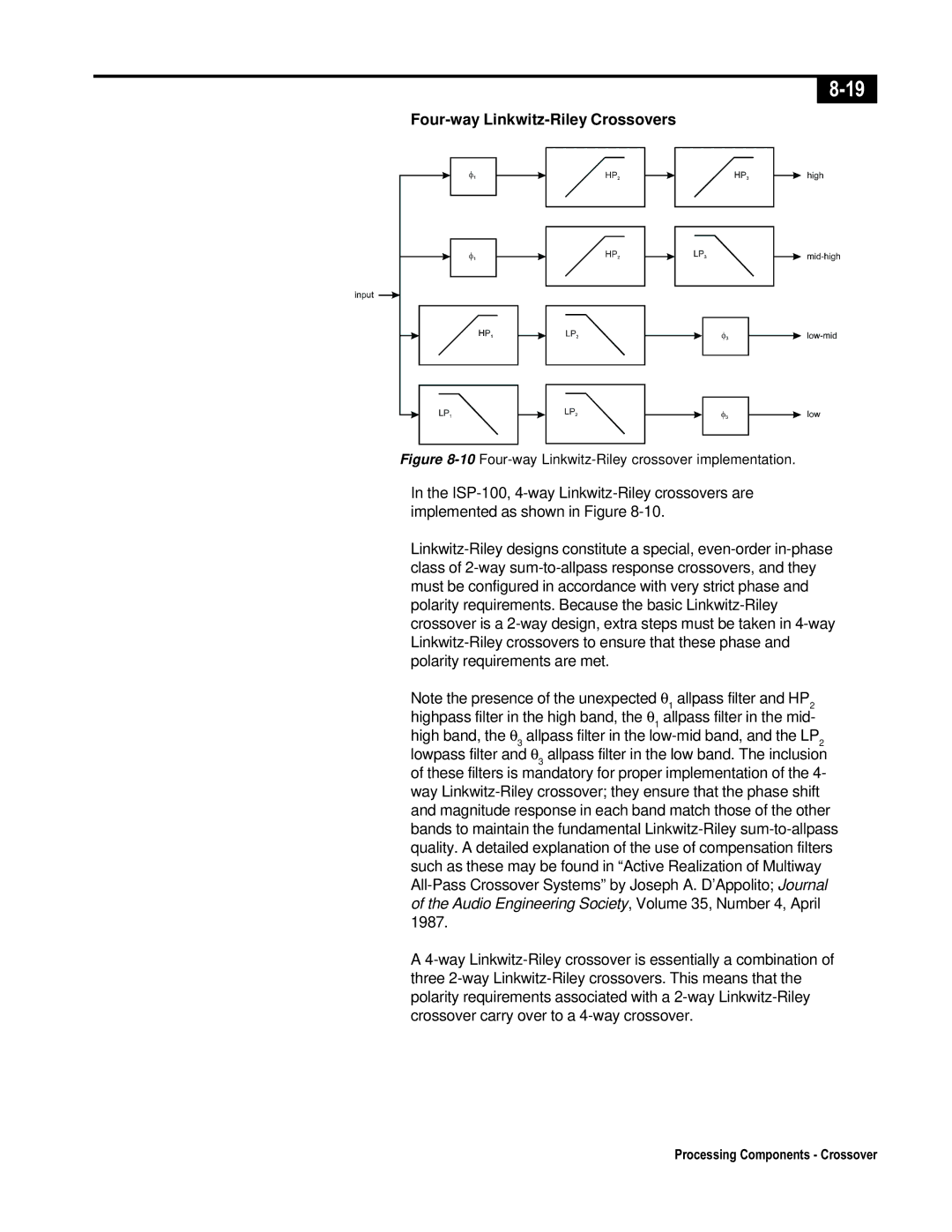
8-19
Four-way Linkwitz-Riley Crossovers
Figure 8-10Four-way Linkwitz-Riley crossover implementation.
In the ISP-100, 4-way Linkwitz-Riley crossovers are implemented as shown in Figure 8-10.
Linkwitz-Riley designs constitute a special, even-order in-phase class of 2-way sum-to-allpass response crossovers, and they must be configured in accordance with very strict phase and polarity requirements. Because the basic Linkwitz-Riley crossover is a 2-way design, extra steps must be taken in 4-way Linkwitz-Riley crossovers to ensure that these phase and polarity requirements are met.
Note the presence of the unexpected θ1 allpass filter and HP2 highpass filter in the high band, the θ1 allpass filter in the mid- high band, the θ3 allpass filter in the low-mid band, and the LP2 lowpass filter and θ3 allpass filter in the low band. The inclusion of these filters is mandatory for proper implementation of the 4- way Linkwitz-Riley crossover; they ensure that the phase shift and magnitude response in each band match those of the other bands to maintain the fundamental Linkwitz-Riley sum-to-allpass quality. A detailed explanation of the use of compensation filters such as these may be found in “Active Realization of Multiway All-Pass Crossover Systems” by Joseph A. D’Appolito; Journal of the Audio Engineering Society, Volume 35, Number 4, April 1987.
A 4-way Linkwitz-Riley crossover is essentially a combination of three 2-way Linkwitz-Riley crossovers. This means that the polarity requirements associated with a 2-way Linkwitz-Riley crossover carry over to a 4-way crossover.
Processing Components - Crossover

